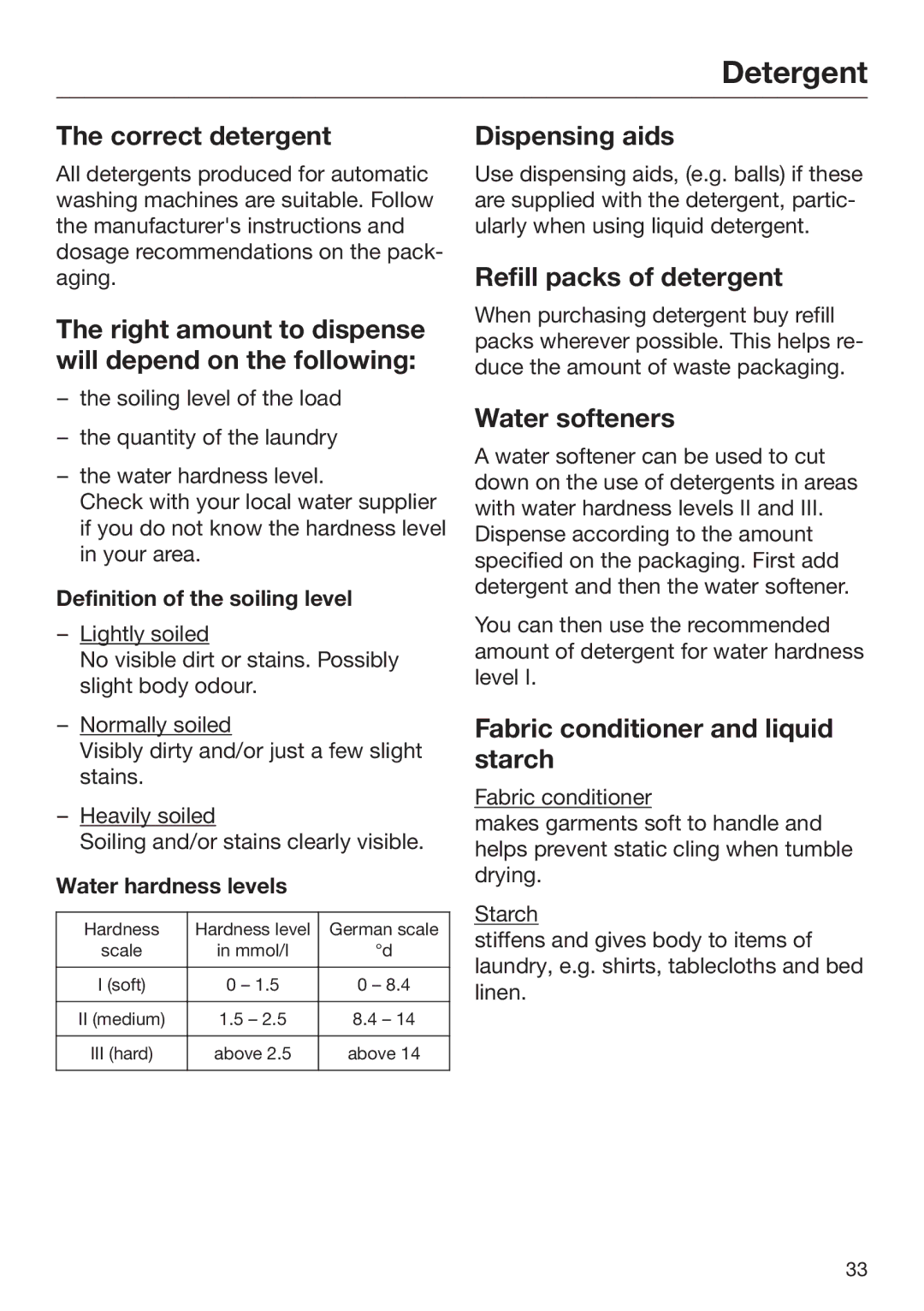Detergent
The correct detergent
All detergents produced for automatic washing machines are suitable. Follow the manufacturer's instructions and dosage recommendations on the pack‐ aging.
The right amount to dispense will depend on the following:
–the soiling level of the load
–the quantity of the laundry
–the water hardness level.
Check with your local water supplier if you do not know the hardness level in your area.
Definition of the soiling level
–Lightly soiled
No visible dirt or stains. Possibly slight body odour.
–Normally soiled
Visibly dirty and/or just a few slight stains.
–Heavily soiled
Soiling and/or stains clearly visible.
Water hardness levels
Hardness | Hardness level | German scale |
scale | in mmol/l | °d |
|
|
|
I (soft) | 0 – 1.5 | 0 – 8.4 |
|
|
|
II (medium) | 1.5 – 2.5 | 8.4 – 14 |
|
|
|
III (hard) | above 2.5 | above 14 |
|
|
|
Dispensing aids
Use dispensing aids, (e.g. balls) if these are supplied with the detergent, partic‐ ularly when using liquid detergent.
Refill packs of detergent
When purchasing detergent buy refill packs wherever possible. This helps re‐ duce the amount of waste packaging.
Water softeners
A water softener can be used to cut down on the use of detergents in areas with water hardness levels II and III. Dispense according to the amount specified on the packaging. First add detergent and then the water softener.
You can then use the recommended amount of detergent for water hardness level I.
Fabric conditioner and liquid starch
Fabric conditioner
makes garments soft to handle and helps prevent static cling when tumble drying.
Starch
stiffens and gives body to items of laundry, e.g. shirts, tablecloths and bed linen.
33
